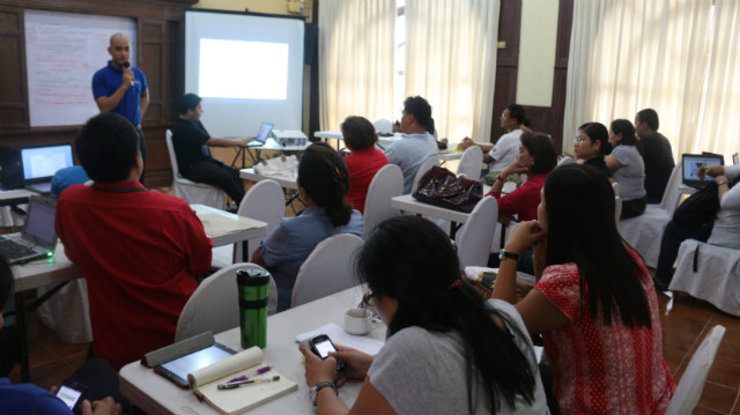SUMMARY
This is AI generated summarization, which may have errors. For context, always refer to the full article.

ORMOC, Philippines – We learned from Super Typhoon Yolanda (Haiyan) that effective communication can ensure that any efforts to prepare and respond to disasters ca make a significant difference. It can either can break or save lives.
When Yolanda hit the Philippines in November 2013, it was a catastrophic calamity that surpassed any expectation. Many lives were lost, and in the midst of the aftermath the process of rebuilding has not just been focused on putting destroyed shelters, but it has also pushed local government units (LGU) to reexamine their disaster preparedness mechanisms.
The International Organization for Migration (IOM) gives priority in accomplishing this objective, recognizing that the role of communications is not only in improving the coordination of vital services post disaster, through the Communication with Communities (CwC) program.
IOM, together with the United Nations Development Program (UNDP) and UN Habitat, piloted a workshop on communication protocol planning for emergency response in Ormoc City from September 22 to 23. The workshop focused on creating a pre-disaster preparedness plan to ensure that the city is better equipped for future calamities.
“During Yolanda, we had real difficulty figuring out at first what kind of system was appropriate, a big question mark in everyone’s head was who to contact and how to contact,” the City Social Welfare Office said. “This workshop is promising that it helps us fill in these blanks, and we hope we can spend less time on this, and more time on preparation for the next disaster.”
As observed in the workshop, it was evident that Yolanda helped create informal but very useful systems of communications that has worked effectively for the city. These systems, however, still need to be formalized and institutionalized so that their lessons can be carried over to future disasters.
“The organizations and agencies engaged in emergency response still need to improve how and why they communicate with each other. The observable lessons learned is that effective communication can also help ease their work during the difficult times of disaster response,” said Irwin Lopez of UN Habitat.
IOM, UNDP, and UN Habitat hope that the initial results of the workshop the start of a complete system for Ormoc, and that the outcome can be shared to other municipalities and regions that require better means of coordination before, during, and after disasters.
The bridges of communication are incredibly important to build so that information can get transported and communicated in the most effective way possible, mitigating disasters and ultimately saving lives. – Rappler.com
Giano Libot is a former Rappler Ambassador and a Communication with Communities Specialist for the International Organization for Migration
Add a comment
How does this make you feel?
There are no comments yet. Add your comment to start the conversation.